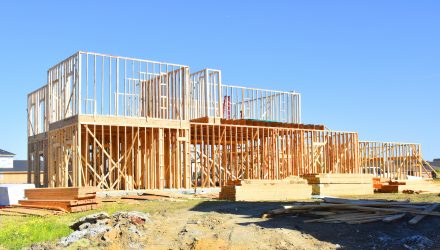Homebuilders have seen an explosion in growth, driving homebuilder ETFs higher, as a swift decline in the availability of existing homes for sale has driven consumer preference for brand-new, high-tech homes with all the amenities for working and schooling. Many workers are also fleeing the city for the suburbs and exurbs, as coronavirus stay-at-home orders have fueled remarkable housing demand in 2020.
ETF Trends CEO Tom Lydon discussed the SPDR® S&P Homebuilders ETF (XHB) on this week’s “ETF of the Week” podcast with Chuck Jaffe on the MoneyLife Show.
XHB is a homebuilder ETF that seeks to provide investment results that, before fees and expenses, correspond generally to the total return performance of an index derived from the homebuilding segment of a U.S. total market composite index. In seeking to track the performance of the S&P Homebuilders Select Industry Index (the “index”), the fund employs a sampling strategy. It generally invests substantially all, but at least 80%, of its total assets in the securities comprising the index. The index represents the homebuilders segment of the S&P Total Market Index (“S&P TMI”).
Lydon notes that while most investors wouldn’t think to look at homebuilder ETFs as a place to invest, there are number of reasons why it makes sense.
“It is surprising because you would think during a time of economic difficulties and unemployment that why would there be a demand for housing. So it’s a couple things. First of all when you look back on what happened in the past, the housing market has been surprisingly resilient during other times or recessions. It kind of acts like a key source of support in an economy weighted down by the coronavirus,” explained Lydon.
A short supply of housing and shift to suburban living are two key factors that are driving the housing market and housing ETFs. In addition, record low interest rates are driving homebuyers to make purchases.
“Now one of the things that’s important is the new generation that’s coming to the home buying market as of 12 months ago weren’t looking for big homes. And many of us that are in the baby boomer generation, where our kids are going to school or they have their jobs and they left the home, are stuck with bigger homes, and there’s gonna be a bit of glut. But in this coronavirus environment people are saying hey I could use a bigger house and I’m going to have an office in my house as well and because maybe they lived in the city and paid higher prices they don’t mind paying suburban prices where they can maybe get more home,” said Lydon added.
“The great thing is we are at record low interest rates. So there’s a huge amount of mortgage applications coming in, more people can qualify, and the rates are really reasonable, and doesn’t seem like they’re going up anytime soon,” Lydon added.
For investors concerned that XHB may be too singularly-focused, Lydon explains that types of companies that are in the ETF are all related to home building but it’s not like you have a predominance of mega cap companies like in the S&P 500. 70% of the companies are mid-cap com, which provides a bit more diversification, and there are a handful of small cap companies as well, allowing for flexibility to remain nimble as things move forward.
Finally, Lydon notes that with bond yields at historic lows, an ETF like XHB is an alternative source of income that can offer a potentially greater yield.
For more market trends, visit ETF Trends.

